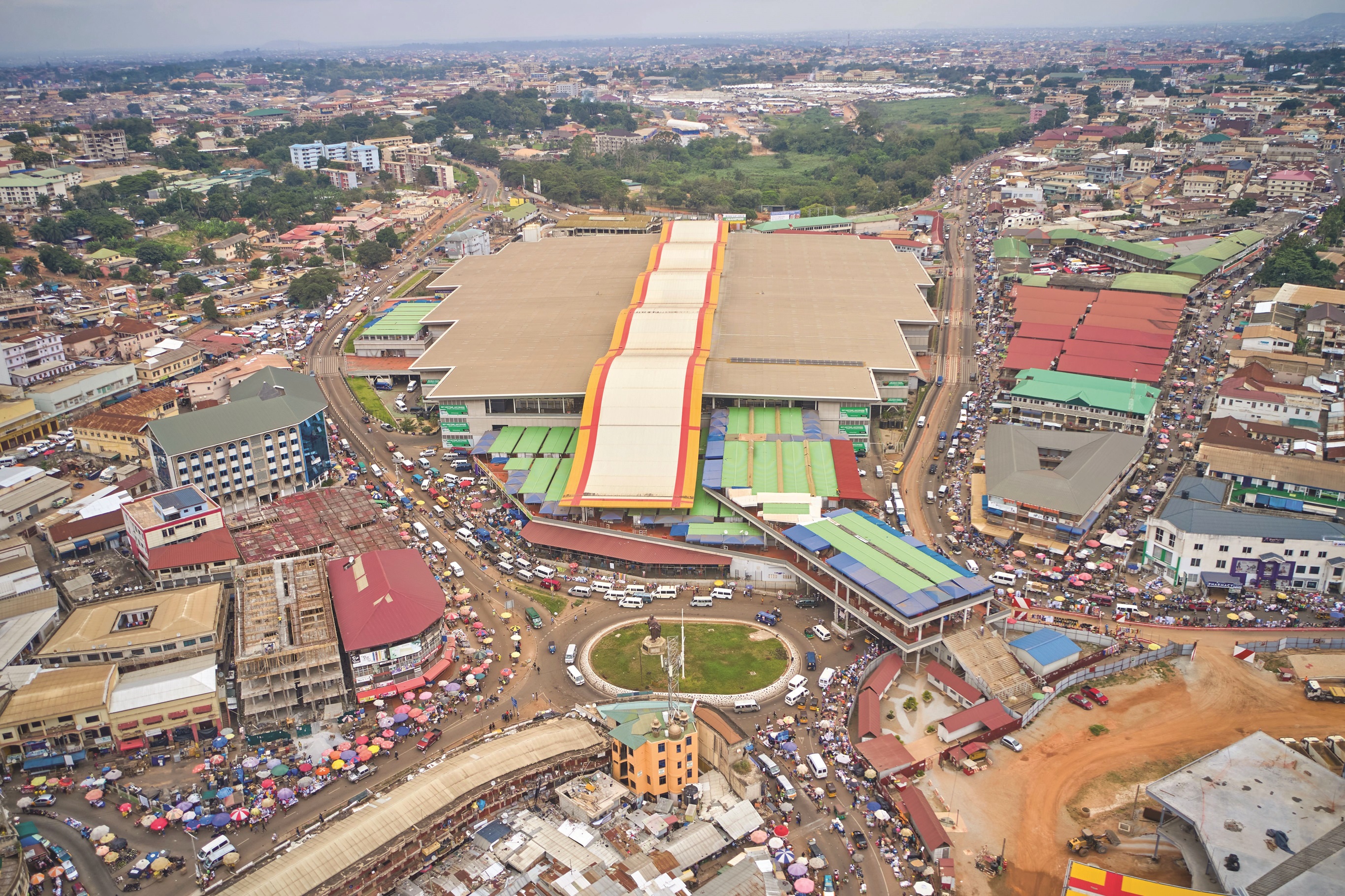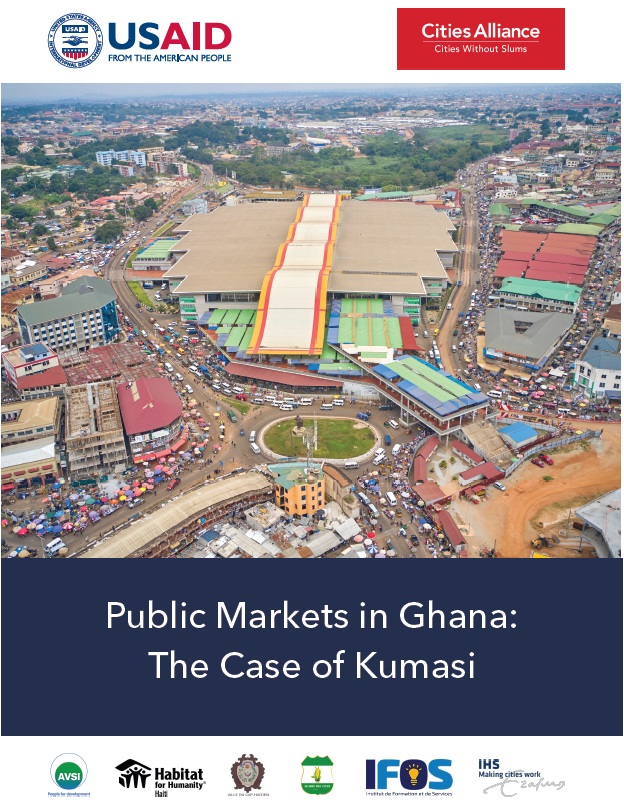- Who We Are
- How We Work
- Regional / Country Initiatives
- Legacy
- Core Themes
- Working Groups
- Portfolio & Results
- Newsroom
- Resources
Public Markets in Ghana: The Case of Kumasi

This publication aims to contribute toward promoting cross-learning based on practices from other cities from the Global South.

'Public Markets in Ghana: The Case of Kumasi' is a publication produced under the LAVIL initiative, in Haiti.
Ghana was chosen as a relevant source of cases because it is also a developing country, shares impacts from colonialism and slavery, and has common cultural roots. There are, of course, differences in history, culture, legal systems, and the current level of development, and these need to be considered when assessing the possible adaptation of lessons. Both countries also face many challenges. We believe that lessons can be learned both from challenges that have been met with success, as well as where challenges are still ongoing.
Kumasi in Ghana has been facing many of the problems typical for other developing countries: rapid urbanization, a poor and vulnerable population, increasing exposure to extreme weather due to climate change, limited government capacity, and always too limited funding. On the positive side it has a vibrant culture and traditions, a resilient society, and an ambition to make things better. This case study looks at Kumasi’s activities to improve how its markets work. It is both a simple story and a complicated one, but one where many lessons can be learned.
There is a saying – “to make an omelette you have to break eggs”, but how to avoid breakages and how to make a good omelette that everyone can afford and enjoy – that is the challenge! Kumasi has had advice from international “chefs” but also has made its own choices.
The challenges and the plan
Kumasi’s old Central Market, one of the largest in West Africa, faced growing congestion, with conflicts between trading spaces and traffic areas. Redevelopment efforts, begun in 2014 and set to complete by 2024, were aimed at addressing these challenges.
The redevelopment plan required a phased approach to accommodate traders during construction. Traders were initially moved to other sites, including the new Racecourse Market located about two kilometres north of the original market. The adjacent Kejetia transport terminal was then transformed into a three-story market building (Kejetia/Central Market Phase 1). Once this was complete, traders relocated there, allowing redevelopment of the original Central Market into a second market building (Phase 2).
To further relieve congestion, additional satellite markets were developed across the city. The Kejetia/Central Market project, due to its scale, required substantial funding, initially supported by the Brazilian government and later by other international sources. The Ghana Urban Management Pilot Project (GUMPP), supported by the French government, also contributed to developing several satellite markets. This case study examines the planning and development of Kejetia/Central Market, Racecourse Market, and the GUMPP-supported satellite markets.
Key outcomes
The Kejetia/Central Market (Phase 1) is now operational and lively, while Phase 2, involving further construction on the Central Market site, remains partially complete due to restrictions on international borrowing. Racecourse Market has expanded rapidly as an alternative trading site, but it faces challenges from underdeveloped infrastructure. Some of the satellite markets have shown innovation in their development, contributing valuable insights to the project. However, persistent issues such as drainage, traffic congestion, and the slow pace of construction have complicated the resettlement of traders, leading to unexpected delays and logistical challenges.
Key lessons
Key lessons from this case highlight the importance of inclusive and holistic approaches to participatory planning, design, relocation management, and financial structuring.
For the physical aspects of planning, design, and infrastructure, a holistic approach ensures that both construction quality and supportive infrastructure, like transportation and maintenance, meet long-term needs. Kumasi’s experience shows that participatory planning—when done effectively—enhances outcomes, but where it falls short, challenges arise. Ensuring alternative trading spaces are available at the right time and location is essential to minimizing disruptions for traders, particularly those who are most vulnerable.
In governance, genuine participation by all stakeholders, especially women, who represent the majority of Ghana’s market traders, is crucial. Inclusive planning that considers informal traders can alleviate congestion while reducing hardship. Effective collaboration between local government departments and the private sector can enhance project success.
For financial management, the case illustrates that balancing costs—particularly loan repayments—with affordability and long-term operation and maintenance is key to achieving redevelopment goals. Flexibility in local financing options can also support sustainable outcomes.
